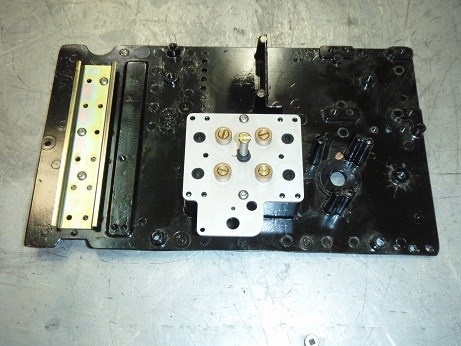Improved Electric Actuator Reliability in Severe Service
As you walk onto the switching valve deck of a coker, the first thing you notice is the heat.
#actuators #maintenance-repair
In a batch coker, there are two drums that work together as a pair. The bitumen is heated to temperatures in excess of 900°F (480°C) in a furnace and fed into one of the drums. Lighter products that have been vaporized flow out through the top of this drum while petroleum coke—unable to vaporize even at these extreme temperatures—remains as a liquid. Once the drum is filled with liquid petroleum coke, the incoming flow of superheated bitumen is redirected to the other drum in the pair while the liquid petroleum coke is cooled with water and then cut out using a water drill. A critical part of this process is the drain valve that allows quench water, which has been used to hasten the cooling of the coke, to drain from the Coker. Any reliability concerns that affect the operation of these drain valves has the potential to negatively affect production.
The Problem
In 2009, Suncor was experiencing challenges with its electric actuators that operate the drain valves in their base site’s upgrading complex. Upon investigation and in collaboration with the MOV (motor-operated valve) manufacturer (EIM) and the local Emerson representatives at Spartan Controls, several areas of improvement were identified and acted upon to create a new “high-heat, high-vibration” model being created with the following changes.
Because the units were operated locally with pushbuttons on the front of the actuator, Suncor personnel were working in close proximity to extremely high heat conditions. Many of the process lines in the coker plant have normal operating temperatures in excess of 600°F (315°C), with some reaching as high as 900°F (480°C). To address this challenge and other related issues, a separate enclosure was mounted remotely from the actuator on a wall nearby, allowing most of the components to be removed from the high heat environment.
Reliability
Regarding reliability more directly, the following challenges were identified and resolved:
- One of the first issues identified was in the older style actuator design, which used a plastic gear limit switch assembly, driven by a single pinion to track any movement of the actuator. The heat and vibration in the plant were causing misalignment and subsequent seizing of the internal metal gears in this assembly, which resulted in mechanical failure of the limit pinion itself, loss of position feedback and control of the MOV.
- The vibration in the application was so severe that it caused the stay rods in the electric motor assembly to loosen, causing the motor to separate from the actuator. In other instances, the 16 bolts that held the electrical cover closed would loosen and allow the cover of the electrical compartment to swing open or fall.
- The electrical enclosure of the existing actuator contained an electro-mechanical contactor to allow the motor to run in either direction (open or closed) and the unit contained a multi-tap transformer to convert high-voltage supply power to lower voltages for the control circuitry and indicator lights, but these heavy components were themselves susceptible to high vibration. Their relatively high mass also contributed to mechanical issues in the brackets and braces that were supposed to hold the electrical components securely inside the electrical enclosure.
The Solution
The plastic gear limit switch was changed to an all-metal assembly integrated with the back plane. The threaded stay rods holding the motor to the actuator body were drilled and then loomed with wire to prevent them from vibrating loose. All of the components were secured with adhesive to help mitigate the effects of vibration. And lastly, all wires inside the actuator were loomed with plastic wire wrap to further protect against vibration-induced wire chaffing.
Results
Article written by Juan Bracho, P.Eng., Suncor Energy and Ryan McKimmie, P.Eng., Spartan Controls Ltd. Technical advisor was Brent Block of Spartan Controls Ltd. To learn more about this process, contact McKimmie.Ryan@spartancontrols.com.
RELATED CONTENT
-
The Diverse Role Valves Play in the Chemical Industry
The chemical industry is extremely diverse with more than 60,000 known products. Like all process industries, the chemical industry needs valves designed for safe, efficient and reliable process operation.
-
Fire Protection Solutions
Because of the potential harm and damage to people and property, fires and explosions are a major concern in refinery, gas processing, petrochemical and offshore, and many other types of facilities.
-
Linear Actuators for Automating Gate Valves
Most professionals in the valve industry are already familiar with the use of linear actuators to operate globe valves.









 Unloading large gate valve.jpg;maxWidth=214)


